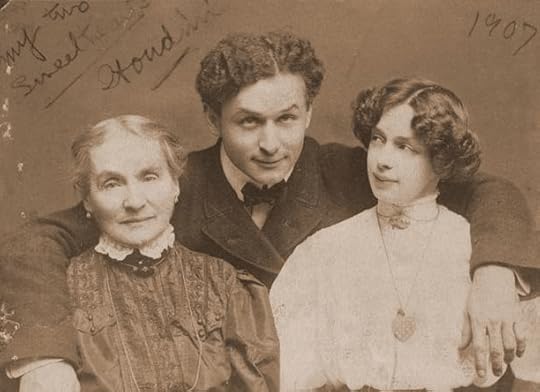R.L. Geer-Robbins's Blog, page 4
January 20, 2025
Tell us what you really think.

Some would say leave a good thing alone.
Some might even caution me to stop watching the train wreck.
But I can’t tear my eyes away.
Now, in the less than 24 hours that TikTok was ‘dark’, I got a lot accomplished. Not because TikTok was inaccessible but because I had a gallon of paint sitting in my laundry room for over a month, and it was time to tackle the eyesore of my guest bathroom.
While painting the walls a lovely shade of ‘It’s a Boy’ (my son’s choice, not mine), I had a few hours to reflect and do some soul-searching. With an open calendar of not doom scrolling for half a day, what did I want to do to fill the hours? I came up with a list of potential activities- gardening, obviously finishing the three books I am currently working on, take up painting again, maybe even reading some of the more controversial books on the market to see what all the fuss is about.
Shit, I even thought about maybe going to a yoga class. In person. I obviously had the time.
Then I thought about what today brings—the official end of the last nine months of social unrest. There is no going back. We have a new President and will have to look forward to our future instead of backward toward what has gone wrong. I am personally not too heartbroken about it.
Without TikTok, I wouldn’t have to listen to the insults about golf swings and mental agility tests. There would be no more outlandish claims that one side works solely for the American people while the other side is trying to dismantle the country from the ground up.
Then TikTok came back online. Surprise, surprise. Now, it was in the politicians’ best interest to ensure that the most significant worldwide app had access to cover the big day.
How else would anyone know that we had a new president?
In case you missed the news- today is inauguration day. President-elected Trump will take the reins of this country once again, and, like all presidents before him, he has vowed to ‘fix the mistakes’ of the last four years.
This claim blows my mind whenever I hear a president make it. Let me explain why.
Four years is only 1,460 days.
A total of 48 months.
Most people can’t even afford car loans for only 48 months. It takes most of us at least 72 months to pay off a $40,000 car (if we can find one at that price).
But this isn’t about President Trump, the state of the American financial institution, or the fact that most people would be hard-pressed to start a small business in four years- let alone turn a country around.
I want to talk about the videos I watched from other countries celebrating the fact that the U.S. was no longer on TikTok. Everything from our metrics system to our educational priorities to how we talk was open for discussion. It was like watching ‘Mean Girls- only this time, it was directed at a whole country.
I didn’t know that we were so hated.
I mean, honestly, I thought we were sitting at the cool kids’ table only to find out we were the school playground bullies.
Apparently, our neighbors to the north really don’t like us, which is strange because they are always coming over to borrow a gallon of milk or some gas. I see more Canadian cars on I-5 in the middle of the day heading to Costco or the outlet mall than I do Washingtonian.
England is obviously still holding a grudge over the Revolutionary War. Everything from apple pie to moonshine was open for analysis on how uncultured and petty we are. Personally, I think they are just mad that we shipped the tea back and kept the coffee for ourselves.
Australia is mad because we keep making fun of them over the Emu War, where they got their ass handed to them by a flock of flightless birds. All joking aside- I do feel bad for those farmers. Can you imagine waking up in the morning to see a flock of 6’3, 80-pound birds eating your livelihood? How do you chase them off?
The whole continent of Asia got together, and surprise, surprise, body shaming was their go-to. Now, let me not lie—we are a country of big-boned people who do door-dash more meals than try to cook at home. But in our defense, fruits and vegetables haven’t been affordable since World War II, and the message gets a little confusing when gyms are promoting Pizza Night.
But what hurt the most was the general assumption that we are all idiots.
I mean, why wouldn’t they think it? We were the country that started the social media trends that are cringe-worthy at best and downright dangerous in many cases.
The worst ones? The nutmeg challenge where people swallow a spoonful of nutmeg to get high. Of course, nutmeg naturally contains a compound called benzodioxole, which is proven to enhance the effectiveness of insecticides and has a hallucinogenic property. Totally safe!
Then there was the Benadryl challenge, where kids (and some adults) were taking more of the prescribed amounts of the allergy medication to enjoy a couple of hours of hallucinations. Now, granted, the challenge did leave more than a handful of teenagers hospitalized, and one death did occur, but according to the internet- it did make for some great 1-minute videos.
And can we forget the Tide Pod challenge? I don’t even know where to start with that four-month run. I mean, talk about taking the saying ‘I’m going to wash your mouth out with soap’ a little too far.
Just like the TikTok ban opened our eyes to our politicians’ backhanded dealings, I think the ban also opened our eyes to how the rest of the world views Americans.
And from where I am sitting- it’s not looking good for the home team.
Until next time, Keep Reading and Stay Caffeinated.
If you’re looking for your next favorite read, I invite you to check out my book, The Raven Society. This spellbinding historical fantasy series takes us on a heart-pounding journey through forgotten legends and distorted history. Uncover the chilling secrets of mythology and confront the horrifying truths that transformed myths into monstrous realities. How far will you go to learn the truth?
The Writer and The Librarian (Book 1):
Signed copies at:
https://rlgeerrobbins.com/product/the-writer-and-the-librarian-the-raven-society-book-1/
The Under Covers Bookstore (UK):
The Writer and the Librarian | The Under Covers (theundercoversbookstoreandcafe.com)
The post Tell us what you really think. appeared first on R.L. Geer-Robbins / Author.
January 19, 2025
TikTok’s Ban and the Future of Social Media in America

They say it’s the end of an era.
And I would have to agree.
The TikTok ban took effect last night in the U.S. after a little over a year of debate about whether the government would use its power to shut down an app that it claimed posed a national security threat.
There are many theories about why TikTok was targeted. Maybe Meta lobbied to take it down because it was losing profit margins. Maybe it really was a security threat. Perhaps big businesses were concerned about the increasing number of small creators starting their own companies, which was affecting their bottom lines.
Who knows?
This is what I do know. It’s sad. Why? Because just like the Tiger King, TikTok was propelled into history at a time when the world was going to shit. Worldwide lockdowns, children being unable to attend school in person, grocery stores with bare shelves, and a shortage of toilet paper.
Mask mandates, people unable to visit their loved ones, the sick dying alone in a hospital room with only a stressed-out medical team to offer them any comfort.
Living in Alaska at the time, the mandates didn’t hit us as hard. Our state government was a little more relaxed than that of the lower 48, and people were already accustomed to being homebound due to our extreme winters. We knew what was happening, but other than the news, we had no idea how bad it was—at least I didn’t.
That was until I downloaded a random app on my iPhone. Then, all of a sudden, I was flooded with information. I saw what was happening in other states, and I was floored. Then there were the George Floyd riots, and I watched cities crumble under the onslaught of protests and fear.
Then, I really began to pay attention. Sure, not all the information was correct. Sometimes people have a way of talking out of their asses before they get all the necessary information to make informed opinions. But that has never changed. After years of playing telephone, I’m sure the story of Adam and Eve and the fabled apple has a hint of misinformation.
This is why I say it’s the end of an era. While the American people have bitched and moaned about our elected officials, we have never paid attention to who was elected to hold the highest seats in this country. We didn’t know who our representatives were, because we didn’t care. It was just some nameless person who we assumed traveled to D.C. a couple of times a year to get an all-expense-paid trip on the taxpayers’ dime.
Until now, they were a necessary evil, allowing us to live our lives as we saw fit. And then they flexed. And we woke up.
I have heard that the TikTok ban would start a civil war. Hell, I heard the Harris / Trump election would start it. But I think that was just a stab in the dark. There is no civil war brewing.
But a revolution is.
Now, the older generation might not care that the rest of the country can’t watch videos on talking birds, rambunctious Huskeys, book reviews, movie highlights, sports bloopers, or current fashion trends. They might even be celebrating the win. God knows Americans spend way too much time doom-scrolling down a black hole of gossip and intrigue.
But to most Americans, it was a way to connect.
Let’s admit it: the days of snail mail, personal interactions, and weekend trips to the mall are over. And we can’t fault the younger generation for it. We created the monster that is social media. We told our children that people were dangerous and to stay home. We put it into their brains that going to the library or zoo was unethical because they could potentially kill someone.
We handed them the phones, tablets, laptops, and gaming systems and said this was the only safe way to connect with people their age.
And then we turned around and had the audacity to berate them for lacking social skills, work ethics, or the ability to communicate using anything other than memes and emojis.
I do think the government was sneaky in slipping the ban into a bill meant for humanitarian relief. I believe that it was a power play. Too many people were getting to know our elected officials on a personal level. We saw their faces and their votes. We questioned their decisions.
And we were calling them out on not representing us.
This ban on TikTok is fundamentally not about the Chinese vs. Americans. If that were the case, why would half of our imports come from China? Hell, the computer I’m sitting in front of was built in China, as was the phone I’m using. My next-door neighbor has a car manufactured in China and shipped on a Chinese cargo ship. When I lived in Alaska, I saw more Chinese fishing boats than American.
I was raised believing that the American government was the most powerful in the world. I was taught to say the Pledge of Allegiance and place my hand over my heart when the National Anthem was played. I carried this pride through my 20+ years in the military and continue to do so as I work for the federal government.
However, I am also beginning to question the integrity of those representing me and my family. I am looking a little harder at those people sitting in the capital and wondering how they go from making $100,000 a year to having a portfolio in the millions. I am questioning how laws are passed and why we can’t seem to pass a budget bill on time. I wonder why certain officials have been in office for 20+ years and haven’t been present for a vote in 180 days.
Who are they representing? Their checking accounts or their people? Their personal interests or the interests of the masses? Their reputation or the country?
And all this started with a ban on a social media platform called TikTok.
I don’t know what the future holds. Maybe on Monday, President Trump will extend the ban for 90 days. Maybe TikTok and Meta will merge. Maybe the platform will stay dark, and the country will move on.
However, I do know that Congress didn’t receive the response it expected. While they may have thought they were protecting our ‘rights and freedoms’—much like King George III thought before the Revolutionary War—they failed to read the room.
Patrick Henry’s speech, which inspired the war, still rings true today: ‘Give me liberty or give me death.’ Americans might be a little unhinged when it comes to most things, but we usually rally together when this country’s fundamental building blocks are crumbling.
Not having our daily dose of crazy pets, insane stunts, and new ‘must-have’ inventions might be the hammer that brings the kingdom down.
Until next time, Keep Reading and Stay Caffeinated.
Subscribe below to stay up to date on myths, legends, mysteries, and the chaos I call my life.
If you’re looking for your next favorite read, I invite you to check out my book, The Raven Society. This spellbinding historical fantasy series takes us on a heart-pounding journey through forgotten legends and distorted history. Uncover the chilling secrets of mythology and confront the horrifying truths that transformed myths into monstrous realities. How far will you go to learn the truth?
The Writer and The Librarian (Book 1):
Signed copies at:
https://rlgeerrobbins.com/product/the-writer-and-the-librarian-the-raven-society-book-1/
The Under Covers Bookstore (UK):
The Writer and the Librarian | The Under Covers (theundercoversbookstoreandcafe.com)
The post TikTok’s Ban and the Future of Social Media in America appeared first on R.L. Geer-Robbins / Author.
End of an era- the TikTok ban

They say it’s the end of an era.
And I would have to agree.
The TikTok ban went into effect last night in the U.S. after a little over a year of debate about whether the government would use its power to shut down an app that it said posed a national security threat.
There are many theories about why TikTok was targeted. Maybe Meta lobbied to take it down because it was losing profit margins. Maybe it really was a security threat. Maybe big businesses were upset about how many small creators were starting their own businesses, and it was hitting their pocketbooks.
Who knows?
This is what I do know. It’s sad. Why? Because just like the Tiger King, TikTok was propelled into history at a time when the world was going to shit. Worldwide lockdowns, children being unable to attend school in person, grocery stores with bare shelves, and toilet paper being in an alarming shortage.
Mask mandates, people unable to visit their loved ones, the sick dying alone in a hospital room with only a stressed out medical team to offer them any comfort.
Living in Alaska at the time, the mandates didn’t hit us as hard. Our state government was a little more relaxed than the lower 48, and people were already used to being homebound because of our extreme winters. We knew what was happening, but other than the news, we had no idea how bad it was—at least I didn’t.
That was until I downloaded a random app on my iPhone. Then, all of a sudden, I was flooded with information. I saw what was happening in other states, and I was floored. Then there were the George Floyd riots, and I watched cities crumble under the onslaught of protests and fear.
Then, I really started paying attention. Sure, not all the information was correct. Sometimes people have a way of talking out of their asses before they get all the necessary information to make informed opinions. But that has never changed. After years of playing telephone, I’m sure the story of Adam and Eve and the fabled apple has a hint of misinformation.
This is why I say it’s the end of an era. While the American people have bitched and moaned about our elected officials, we have never paid attention to who was elected to hold the highest seats in this country. We didn’t know who our representatives were, because we didn’t care. It was just some nameless person who we assumed traveled to D.C. a couple of times a year to get an all-expense paid trip on the taxpayer’s dime.
Until now, they were a necessary evil so we could live our lives as we saw fit. And then they flexed. And we woke up.
I have heard that the TikTok ban would start a civil war. Hell, I heard the Harris / Trump election would start it. But I think that was just a stab in the dark. There is no civil war brewing.
But a revolution is.
Now, the older generation might not care that the rest of the country can’t watch videos on talking birds, rambunctious Huskeys, book reviews, movie highlights, sports bloopers, or current fashion trends. They might even be celebrating the win. God knows Americans spend way too much time doom scrolling down a black hole of gossip and intrigue.
But to most Americans, it was a way to connect.
Let’s admit it: the days of snail mail, personal interactions, and weekend trips to the mall are over. And we can’t fault the younger generation for it. We created the monster that is social media. We told our children that people were dangerous and stay home. We put it into their brains that going to the library or zoo was unethical because they could potentially kill someone.
We handed them the phones, tablets, laptops, and gaming systems and said this was the only safe way to connect with people their age.
And then we turned around and had the audacity to berate them for lacking social skills, work ethics, or the ability to communicate using anything other than memes and emojis.
I do think the government was sneaky in slipping the ban into a bill meant for humanitarian relief. I believe that it was a power play. Too many people were getting to know our elected officials on a personal level. We saw their faces and their votes. We questioned their decisions.
And we were calling them out on not representing us.
This ban on TikTok is fundamentally not about the Chinese vs. Americans. If that were the case, why would half of our imports come from China? Hell, the computer I am sitting in front of was built in China, as was the phone I am using. My next-door neighbor has a car manufactured in China and shipped on a Chinese cargo ship. When I lived in Alaska, I saw more Chinese fishing boats than American.
I was raised believing that the American government was the most powerful in the world. I was taught to say the Pledge of Allegiance and place my hand over my heart when the National Anthem was played. I carried this pride through my 20+ years in the military and even now as I continue to work for the federal government.
But, even I am beginning to question the integrity of those representing me and my family. I am looking a little harder at those people sitting in the capital and wondering how they go from making $100,000 a year to having a portfolio in the millions. I am questioning how laws are passed and why we can’t seem to pass a budget bill on time. I wonder why certain officials have been in office for 20+ years and haven’t been present for a vote in 180 days.
Who are they representing? Their checking accounts or their people? Their personal interests or the interests of the masses? Their reputation or the country?
And all this started with a ban on a social media platform called TikTok.
I don’t know what the future holds. Maybe on Monday, President Trump will extend the ban for 90 days. Maybe TikTok and Meta will merge. Maybe the platform will stay dark, and the country will move on.
But I do know that Congress didn’t get the response it thought it would. While they may have thought they were protecting our ‘rights and freedoms’—much like King George III thought before the Revolutionary War—they failed to read the room.
Patrick Henry’s speech, which inspired the war, still rings true today: ‘Give me liberty or give me death.’ Americans might be a little unhinged when it comes to most things, but we usually rally together when this country’s fundamental building blocks are crumbling.
Not having our daily dose of crazy pets, insane stunts, and new ‘must-have’ inventions might be the hammer that brings the kingdom down.
Until next time, Keep Reading and Stay Caffeinated.
If you’re looking for your next favorite read, I invite you to check out my book, The Raven Society. This spellbinding historical fantasy series takes us on a heart-pounding journey through forgotten legends and distorted history. Uncover the chilling secrets of mythology and confront the horrifying truths that transformed myths into monstrous realities. How far will you go to learn the truth?
The Writer and The Librarian (Book 1):
Signed copies at:
https://rlgeerrobbins.com/product/the-writer-and-the-librarian-the-raven-society-book-1/
The Under Covers Bookstore (UK):
The Writer and the Librarian | The Under Covers (theundercoversbookstoreandcafe.com)
The post End of an era- the TikTok ban appeared first on R.L. Geer-Robbins / Author.
October 31, 2024
This Day In History- 31 Oct
 “My Two Sweethearts” – Houdini with his mother and wife, c. 1907
“My Two Sweethearts” – Houdini with his mother and wife, c. 190731 Oct 1926—This day in history— The world-famous escape artist and magician Harry Houdini passed away in a Detroit hospital due to peritonitis. A few days prior, Houdini made a comment about the strength of his stomach muscles during a lecture in Montreal and was unexpectedly punched twice by a student.
Unprepared for the blows, his appendix ruptured, and he fell ill on his journey to Detroit. Despite performing one final time, he was eventually hospitalized and underwent surgery. Unfortunately, the burst appendix had already poisoned his body, and he passed away on October 31st.
Erik Weisz, known as Houdini, was born in Budapest in 1874. When Erik was young, his father, a rabbi, moved the family to Appleton, Wisconsin. He quickly showed off his natural ability for acrobatics and lock-picking.
By age nine, he had joined a traveling circus where he showcased his talents as a contortionist and trapeze artist. However, it wasn’t until he began specializing in escape acts that he gained true fame. He wowed audiences with his seemingly impossible escapes from handcuffs and other restraints. In 1900, he embarked on his first international tour and became a sensation all over Europe.
Unlike other magicians, Houdini relied solely on his strength, dexterity, and intense concentration to execute his escapes—no trickery was involved.
In his later years, Houdini actively fought against mediums, mind readers, fakirs, and others who claimed to possess supernatural abilities but relied on tricks. Despite this, he maintained a strong interest in spiritualism and made a promise with his wife and friends that the first one to pass away would attempt to communicate with the living world from beyond the grave. Many of those friends did die, but Houdini never received any message from them.
Then, on Halloween night in 1926, Houdini himself passed away at the age of 52. His wife waited eagerly for a sign from him, but none ever came; she ultimately declared the experiment a failure shortly before she died in 1943.
Until next time, Keep Reading and Stay Caffeinated.
If you’re looking for your next favorite read, I invite you to check out my book, The Raven Society. This spellbinding historical fantasy series takes us on a heart-pounding journey through forgotten legends and distorted history. Uncover the chilling secrets of mythology and confront the horrifying truths that transformed myths into monstrous realities. How far will you go to learn the truth?
The Writer and The Librarian (Book 1):
Signed copies at:
https://rlgeerrobbins.com/product/the-writer-and-the-librarian-the-raven-society-book-1/
The Under Covers Bookstore (UK):
The Writer and the Librarian | The Under Covers (theundercoversbookstoreandcafe.com)
The post This Day In History- 31 Oct appeared first on R.L. Geer-Robbins / Author.
October 30, 2024
This Day In History- 30 Oct
 Orson Welles (arms raised) rehearses his radio depiction of H.G. Wells’ classic, The War of the Worlds. © Bettmann/CORBIS
Orson Welles (arms raised) rehearses his radio depiction of H.G. Wells’ classic, The War of the Worlds. © Bettmann/CORBIS30 Oct 1938—This day in history—Orson Welles’s adaptation of The War of the Worlds is broadcast through the crackling airwaves of the radio. The soundscape created by advanced sound effects and skilled actors is so convincing that listeners are transported to the chaotic scenes described in the play.
Frantic reporters relay their harrowing experiences, their voices trembling with fear and urgency as they call out for help. The characters’ emotions are palpable, drawing listeners deeper into the unfolding terror.
An announcer’s voice breaks through the chaos, reporting mass hysteria erupting near the sites where the Martians have landed. Desperate screams and cries echo in the background, a chilling sound of the thousands of people struggling to escape the unknown threat.
The problem was- it was all a show. A radio production. Fake.
But the public didn’t realize.
Welles and his Mercury Theatre on the Air had produced a radio version of H.G. Wells’s The War of the Worlds, turning the classic novel into fabricated news reports detailing a Martian attack in New Jersey. These reports fooled some listeners, and they frantically called the police, newspapers, and radio stations, leading many journalists to believe that the show had caused widespread panic.
Welles passionately protested his innocence the next day, claiming he had never intended to deceive the audience. However, very few people took his words at face value then or now. His performance, captured on newsreel cameras, appeared too contrite and repentant, with his words being carefully chosen. Rather than ruining his career, War of the Worlds propelled Welles into Hollywood, where he would soon create his masterpiece, Citizen Kane. Given Welles’s immense success after the broadcast, many have doubted if he genuinely felt remorse for causing such a sensation.
Until next time, Keep Reading and Stay Caffeinated.
If you’re looking for your next favorite read, I invite you to check out my book, The Raven Society. This spellbinding historical fantasy series takes us on a heart-pounding journey through forgotten legends and distorted history. Uncover the chilling secrets of mythology and confront the horrifying truths that transformed myths into monstrous realities. How far will you go to learn the truth?
The Writer and The Librarian (Book 1):
Signed copies at:
https://rlgeerrobbins.com/product/the-writer-and-the-librarian-the-raven-society-book-1/
The Under Covers Bookstore (UK):
The Writer and the Librarian | The Under Covers (theundercoversbookstoreandcafe.com)
The post This Day In History- 30 Oct appeared first on R.L. Geer-Robbins / Author.
October 29, 2024
This Day In History- 29 Oct
 The execution of Sir Walter Raleigh, from The Popular History of England: An Illustrated History of Society and Government from the Earliest Period to Our Own Times, by Charles Knight, c. 1860, via the History Press
The execution of Sir Walter Raleigh, from The Popular History of England: An Illustrated History of Society and Government from the Earliest Period to Our Own Times, by Charles Knight, c. 1860, via the History Press29 Oct 1904—This day in history—Sir Walter Raleigh, a daring and ambitious English adventurer and writer who had once been a favorite of Queen Elizabeth I, tragically met his end in London by the sharp blade of an executioner’s axe.
Raleigh funded an expedition that successfully landed on the coast of North America. The newly discovered land was christened Virginia in honor of the Virgin Queen Elizabeth. Raleigh then organized a second and third expedition in 1585 and 1587, intending to establish a British settlement on Roanoke Island, located in what is now North Carolina. Unfortunately, the colonization attempts were unsuccessful due to strained relationships with the indigenous people and insufficient resources.
After the death of Elizabeth in 1603, when Raleigh fell out of favor with King James I and was charged with treason. He was sentenced to death but later received a reprieve, which allowed him to embark on a voyage to the New World. His mission was to establish a lucrative gold mine in the Orinoco River region of South America. In other words- he was looking for El Dorado.
While there, his men attacked a Spanish settlement, resulting in the death of Raleigh’s son- Walter.
But as fate would have it, the expedition proved to be a disappointment, and upon his return to England, Raleigh’s final fate was sealed with the fulfillment of his execution to appease the Spaniards.
Until next time, Keep Reading and Stay Caffeinated.
If you’re looking for your next favorite read, I invite you to check out my book, The Raven Society. This spellbinding historical fantasy series takes us on a heart-pounding journey through forgotten legends and distorted history. Uncover the chilling secrets of mythology and confront the horrifying truths that transformed myths into monstrous realities. How far will you go to learn the truth?
The Writer and The Librarian (Book 1):
Signed copies at:
https://rlgeerrobbins.com/product/the-writer-and-the-librarian-the-raven-society-book-1/
The Under Covers Bookstore (UK):
The Writer and the Librarian | The Under Covers (theundercoversbookstoreandcafe.com)
The post This Day In History- 29 Oct appeared first on R.L. Geer-Robbins / Author.
October 28, 2024
This Day In History- 28 Oct
 Credit: ASSOCIATED PRESS
Credit: ASSOCIATED PRESSIronworkers work on top of the Gateway Arch as the keystone section is inched into place by a giant crane in St. Louis, Mo., Oct. 28, 1965. One worker stands atop the final ten-ton section as it is settled.
28 Oct 1904—This day in history—A momentous event took place in history—the completion of the Gateway Arch. This architectural masterpiece stands tall at a staggering 630 feet and is crafted from sleek stainless steel in the shape of a graceful catenary curve.
It proudly represents the Jefferson National Expansion Memorial, standing on the waterfront in the vibrant city of St. Louis, Missouri. Finnish-born architect Eero Saarinen’s brilliant mind designed this iconic arch to pay tribute to commemorate the crucial role that St. Louis played in the rapid westward expansion.
Today, the Gateway Arch commemorates the diverse individuals who have profoundly impacted the region and the nation. Among them was Thomas Jefferson, who envisioned expanding America’s territory and successfully negotiated the Louisiana Purchase in 1803, effectively doubling its size. Then there were Lewis & Clark, along with their Shoshone guide Sacagawea, who bravely explored this new land and charted a path to the Pacific Ocean. In more recent history, Dred and Harriet Scott courageously filed a lawsuit at the Old Courthouse for their freedom from slavery, while St. Louis suffragette Virginia Minor fought for women’s right to vote through her own legal case.
Until next time, Keep Reading and Stay Caffeinated.
If you’re looking for your next favorite read, I invite you to check out my book, The Raven Society. This spellbinding historical fantasy series takes us on a heart-pounding journey through forgotten legends and distorted history. Uncover the chilling secrets of mythology and confront the horrifying truths that transformed myths into monstrous realities. How far will you go to learn the truth?
The Writer and The Librarian (Book 1):
Signed copies at:
https://rlgeerrobbins.com/product/the-writer-and-the-librarian-the-raven-society-book-1/
The Under Covers Bookstore (UK):
The Writer and the Librarian | The Under Covers (theundercoversbookstoreandcafe.com)
The post This Day In History- 28 Oct appeared first on R.L. Geer-Robbins / Author.
October 27, 2024
This Day In History- 27 Oct
 The Miriam and Ira D. Wallach Division of Art, Prints and Photographs: Picture Collection, The New York Public Library. “City Hall Subway Station, New York” The New York Public Library Digital Collections. 1906.
The Miriam and Ira D. Wallach Division of Art, Prints and Photographs: Picture Collection, The New York Public Library. “City Hall Subway Station, New York” The New York Public Library Digital Collections. 1906.27 Oct 1904—This day in history—All eyes were on New York City as Mayor George McClellan took the reins of the city’s revolutionary new transportation system: the subway.
Although London had already established the oldest underground train network in 1863 and Boston opened the first subway in the United States in 1897, all eyes were now on New York, which quickly became home to America’s largest and most advanced subway system.
The IRT, also known as the Interborough Rapid Transit Subway, was New York City’s first subway company. It was created in response to elevated train lines that were popping up all over the city. The idea was to construct an underground rapid transit railway system to alleviate street traffic and aid in the growth of new areas of New York, as stated by NYCsubway.org.
A massive crowd of 7,000 people swarmed around City Hall as 200 policemen struggled to maintain control. Some individuals forced their way into the underground entrance. According to The New York Times, both sections of the train were overly packed, with approximately 1,100 passengers squeezed into every car.
Now, 118 years after its opening, riding the train is a mundane activity, and the City Hall Station is no longer accessible to the general public. In 1945, only a few decades after its opening, it was shut down because its curved platform could not accommodate the IRT’s newer, longer train cars. Yet, it continues to be mesmerizing and serves as a reminder of how monumental it was back then to journey underground and board a train.
More information can be found at Contemplating and Commemorating Rapid Transit in New York City | Museum of the City of New York
Until next time, Keep Reading and Stay Caffeinated.
If you’re looking for your next favorite read, I invite you to check out my book, The Raven Society. This spellbinding historical fantasy series takes us on a heart-pounding journey through forgotten legends and distorted history. Uncover the chilling secrets of mythology and confront the horrifying truths that transformed myths into monstrous realities. How far will you go to learn the truth?
The Writer and The Librarian (Book 1):
Signed copies at:
https://rlgeerrobbins.com/product/the-writer-and-the-librarian-the-raven-society-book-1/
The Under Covers Bookstore (UK):
The Writer and the Librarian | The Under Covers (theundercoversbookstoreandcafe.com)
The post This Day In History- 27 Oct appeared first on R.L. Geer-Robbins / Author.
October 26, 2024
This Day In History- 26 Oct
 Boot Hill Cemetery in Tombstone. The tombstones of Frank McLaury, Tom McLaury are shown- Arizona Memory Project
Boot Hill Cemetery in Tombstone. The tombstones of Frank McLaury, Tom McLaury are shown- Arizona Memory Project26 Oct 1881—This day in history—The crisp fall air hung heavy with tension in the dusty streets of Tombstone, Arizona. The Earp brothers stood tall and determined, their guns ready, facing off against the notorious Clanton-McLaury gang.
The sun cast an eerie orange glow over the scene as the two sides prepared for what would become one of the most infamous shootouts in American history. With a deafening roar, the gunfight began, lasting only 30 seconds but feeling like an eternity to those involved.
An estimated 30 shots rang out into the air, each one echoing through the deserted streets.
Some say Virgil Earp fired the first shot; others claim it was one of the Clanton-McLaurys. Regardless, chaos reigned as bullets flew and lives hung in the balance. In a swift and deadly move, Virgil’s revolver found its mark on Billy Clanton’s chest while Doc Holliday’s shotgun blasted Tom McLaury’s chest, both men falling to the ground. The aftermath of this legendary shootout would be discussed and debated for years to come.
More information can be found at O.K. Corral Gunfight Site, Tombstone AZ: History
Until next time, Keep Reading and Stay Caffeinated.
If you’re looking for your next favorite read, I invite you to check out my book, The Raven Society. This spellbinding historical fantasy series takes us on a heart-pounding journey through forgotten legends and distorted history. Uncover the chilling secrets of mythology and confront the horrifying truths that transformed myths into monstrous realities. How far will you go to learn the truth?
The Writer and The Librarian (Book 1):
Signed copies at:
https://rlgeerrobbins.com/product/the-writer-and-the-librarian-the-raven-society-book-1/
The Under Covers Bookstore (UK):
The Writer and the Librarian | The Under Covers (theundercoversbookstoreandcafe.com)
The post This Day In History- 26 Oct appeared first on R.L. Geer-Robbins / Author.
October 2, 2024
Brain of Albert Einstein.
Friends,
Sometimes, I come across information that makes me stop in my tracks. Information that I had some small tidbit of knowledge of, but not the whole story.
Such as it should be when there is so much to learn.
I had a friend when I was going through my Master’s program who was studying to be a medical historian. Honestly, at that time, I didn’t know that history could be spliced into certain subjects within the subject: history of Medicine, history of Scientists, history of dental procedures or medical practices.
Usually, with these smaller sub-subjects, the historian will narrow it down even further to a certain time or, in this case… person.
Albert Einstein is a favorite among historians studying science or space. Or how a genius brain works.
Back StoryNow, Einstein had a brilliant life, and I could spend weeks talking about his childhood, early life, scientific contributions, and final years…
What I want to talk about is what happened to him after he died.
Einstein passed away on April 18, 1955, at the age of 76, of an abdominal aortic aneurysm. He was a pipe smoker and was often found picking up stray cigarette butts along the Princeton University campus and using the discarded tobacco to fill his pipe. At the time, he insisted that smoking ‘contributes to a somewhat calm and objective judgment in all human affairs.’
As a lifelong smoker who has recently quit smoking cigarettes- I will be the first to admit that I don’t think he is wrong.
As long as you ignore the medical concerns and potential death.
Side note- it was thought he died of syphilis due to his MANY affairs, but the autopsy proved that while he was very free with his love- he never contracted the deadly disease.
The autopsy.Thomas Harvey was the pathologist on call the night Einstein died, and by all accounts, it was like winning the lottery. For years, people had wondered if the brain was formed differently for people of higher IQs or with specific medical/mental health diagnoses.
And here was the body of arguably the most intelligent man in the world. Havey couldn’t wait to open him up.
The problem was that Einstein had already left specific instructions that he wanted to be cremated and his ashes scattered secretly to discourage idolaters.
Did Harvey get permission? Nope. He took it upon himself to perform the autopsy because what would Einstein do? He was already dead.
Better to ask for forgivenessWhat did Einstein’s children have to say when they arrived at the hospital for their father’s body? Well, they were none too pleased. But the damage had been done, and Harvey talked a sweet game. Hans Albert, Einstein’s son, gave his permission somewhat reluctantly to have his father’s brain studied, and any results would be published only in reputable scientific journals.
Not all is forgivable. Harvey, on the day Einstein died. (Image credit: Getty)
Harvey, on the day Einstein died. (Image credit: Getty)Within months, Harvey was dismissed from Princeton Hospital for refusing to give up the brain. Interestingly, he had also taken Eienstein’s eyes, which he had sent to Einsein’s eye doctor, Henry Abrams. (They are currently in a lock box in New York City. There are rumors on the auction block circuit that they are periodically up for sale, but so far, they have never been advertised.)
Now, here is where the story gets stranger. Harvey was not a brain specialist.
He was a pathologist, a medical doctor specializing in analyzing tissue, blood, urine, and other body fluids to diagnose and treat medical conditions, not someone who studies how the brain works.
Road TripAfter Harvey lost his job, he took Einstein’s brain on the road. The first stop was a Philadelphia hospital where a technician sliced the organ into over 200 blocks and embedded the pieces in celloidin. The remainder of the brain was settled into formalin-filled jars and stored in the basement of Harvey’s home in Princeton.
When Harvey’s marriage failed, his ex-wife threatened to throw the jars away, and Harvey headed to the Midwest, Einstein in tow.
For a while, Harvey worked as a medical supervisor in a biological testing lab in Wichita, Kansas, and kept the brain in a cider box stashed under a beer cooler.
Havey left that job and moved to Weston, Missouri, where he practiced medicine while studying the brain in his spare time. He lost his job in 1988 when he failed a three-day competency exam and headed to Lawrence, Kansas, where he took a job as an assembly-line worker in a plastic factory.
This is when Harvey thought it would be an excellent time to ensure his name wasn’t forgotten. He would cut chunks of it off and send them to researchers worldwide. Ironically, he didn’t have many scientists beating down his door for a chance to own a piece of Einstein.
Most of the purchases were made by people who just really liked Einstein.
The journey wasn’t over.In 1997, Harvey embarked on a cross-country road trip with a reporter named Michael Paternniti to find Einstein’s granddaughter. With the brain safely tucked into the trunk of a Buick Skylark, the two men set off on an adventure from New Jersey to California.
 Thomas Stoltz Harvey holds up a jar containing a piece of Albert Einstein’s brain in 1994. Harvey oversaw Einstein’s autopsy in 1955 and kept much of the physicist’s brain in his possession for more than 40 years. (Image credit: Getty)
Thomas Stoltz Harvey holds up a jar containing a piece of Albert Einstein’s brain in 1994. Harvey oversaw Einstein’s autopsy in 1955 and kept much of the physicist’s brain in his possession for more than 40 years. (Image credit: Getty)By all accounts, Harvey had a change of heart and decided to hand the jars over to the granddaughter. But she didn’t want them. Where would she put a jar full of brains? On the mantel?
So it was back to Princeton they went.
In 2010, Havey’s heirs transferred the remains to the National Museum of Health and Medicine to include 14 photos of the brain before the sectioning. Something the medical community had never seen before. If you ask me, the photographs got more attention than the actual brain.
In 2013, the Mutter Museum in Philadelphia acquired 46 small portions mounted on microscope slides, and now on permanent display.
I have been to the museum on a family vacation, and I can say with all certainty that it’s not much to look at—just rows of what looks like kidney beans. (Sorry, Einstein.)
But the plaque was really nice.
His was not the only one.The concept of studying the brains of famous people is not a new phenomenon. Carl Friedrich Gauss, a famous German mathematician, had his thinker preserved 100 years before Einstein.
Vladimir Lenin’s brain is currently hanging out at The Department of Brain Research of the Scientific Center of Neurology of the Russian Academy of Medical Sciences. His body is buried in a mausoleum on the Red Square.
Ishi, the last known Yahi (a Native American tribe Indigenous to Northern California), was first a living exhibit at the Pheobe Hearst Museum of Anthropology at UC Berkeley until his death of tuberculosis in 1916. His body was cremated, but his friend, anthropologist Alfred Kroeber, sent his brain to the Smithsonian. It wasn’t until 1999 that the Smithsonian decided to give the remains back to be reunited with his remains in Tehama County.
John Edward Howard Rulloff, a Canadian-born American who was a doctor, lawyer, schoolmaster, photographer, inventor, phrenologist, and philologist, as well as a serial killer, has his brain currently on display at the Wilder Brain Collection at Cornell University.
Final thoughts.As a historian, I am often thrilled when we find the body of our ancestors. It can share so much valuable information on culture, way of life, beliefs, religions, and diet.
It can also put a name to the dead.
But then there are cases like this one that don’t just border the line of mistreatment but jump into the abyss of ‘you got to be shitting me.’
When you think genius, the first name that pops up is Albert Einstein. He will always be an international hero. His life will be studied for generations to come. When we can no longer extract information from his diaries, papers, and brain, someone will find something to write about.
His name will always be remembered.
But this is a case of respecting the person vs. respecting their death. A line was crossed. We praised Einstein for what he gave us as a society and then disrespected him as a person. I will never think this was ethical, moral, or even something that should have been done in the name of science.
RIP Albert Einstein.
Until next time, Keep Reading and Stay Caffeinated.
If you’re looking for your next favorite read, I invite you to check out my book, The Raven Society. This spellbinding historical fantasy series takes us on a heart-pounding journey through forgotten legends and distorted history. Uncover the chilling secrets of mythology and confront the horrifying truths that transformed myths into monstrous realities. How far will you go to learn the truth?
The Writer and The Librarian (Book 1):
Signed copies at:
https://rlgeerrobbins.com/product/the-writer-and-the-librarian-the-raven-society-book-1/
The Under Covers Bookstore (UK):
The Writer and the Librarian | The Under Covers (theundercoversbookstoreandcafe.com)
The post Brain of Albert Einstein. appeared first on R.L. Geer-Robbins / Author.



